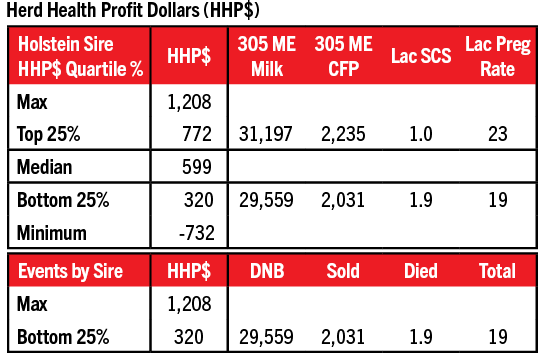Feedback loop
Communication, prevention and protocols is a sort of feedback loop for Singing Brook with each effort a reflection of the former and a determining factor in the success of the following. Halahan’s remote management style is unique and while she visits the herd weekly, more than 50% of her time is spent sorting through data behind a computer screen. She uses a cloud-based platform called Slack to encourage dialogue and record keeping among her teammates working in all areas of the farm, from calf management and milking to breeding and herd health.
She compares the Slack platform to a bulletin board where all teammates can share updates, challenges and triumphs. One particular update that Halahan posts daily includes somatic cell count (SCC) reports allowing parlor workers to reply with any changes in protocol or challenges that may have contributed to a drop or spike. Although “spike” is a strong description considering Singing Brook’s considerably low SCC with their last 10 pickups each under 100,000.
Team members can also review Halahan’s comments on every fresh cow in which she simply describes how individual animals are acting or recovering. They review those records to identify patterns and pinpoint challenges at dry-off or pre-fresh. Halahan explains, “There’s no such thing as a fresh cow problem. It’s a pre-fresh or even a dry-off problem.” In addition to post-calving notes, they rely heavily on the nutrition module and transition alert feature from CowManager®. She also uses CowManager to watch cows hourly following a treatment to verify its efficacy and can then make adjustments to their protocol for the next time they need to treat a sick cow.
Culling decisions are heavily influenced by their communication, prevention and protocol feedback loop. “By systematically using the same procedures and looking at data, we are able to make culling decisions with confidence,” says Halahan. Behind the scenes, she calls it “the triangle of doom” but it’s a logical approach when one breaks it down. They have a list of common ailments and risk factors, such as: high SCC, off-feed, pregnant with twins, a drop in milk production and over-conditioned. If a cow checks three of those boxes, she is culled before dry-off. Halahan likes to refer to their cull list as a “good game” list, meaning she culls cows before they become problematic but after they’ve exceeded their return on investment. “It’s like I’m giving them a high five and telling them ‘good game.’”
A large part of Halahan’s proactive strategy is genetics. She uses a football reference to amplify the importance of genetics, “If you think you can manage around health problems, you’re starting at the 25-yard line.” With the help of Premier Select Sires team members, including Michelle Cornman, Steve Hoover and Jason Mearkle, they have developed a genetic strategy to create cows that thrive in Singing Brook Farms’ environment.
“You have to know yourself and know what your farm can manage. All farms have health issues, but which ones are you better at managing and recovering from? What costs you the most money?” explains Halahan. With this in mind, Singing Brook is hyper-focused on health traits and functional type. They use Herd Health Profit Dollars® (HHP$®) to determine sires, with added attention to Cow Respiratory Disease, Lameness Resistance, Zoetis and CDCB mastitis resistance traits and Somatic Cell Score. For functional type, they pay attention to udders and feet and legs.
In addition to sire selection and mating strategy, Premier Select Sires uses the farm’s genomic data to quartile the herd and assign sexed, conventional and beef semen. Genomic reports and performance data reflect genetic selection, Halahan says “The cows perform exactly how the numbers say they should. It takes years to see the results of your genetic decisions, but its reaffirming to see the top and the bottom is getting narrower. We are raising the bar!”
Information that leads to solutions
Halahan describes farming as a 10,000 piece puzzle and she and her team have to get the pieces in the right place in order to be successful. She believes that her role is to provide information, encourage dialogue and review data, but the on-farm component that her team provides is critical, and that combination yields solutions. Their genetic strategy is a key component within their efforts to be proactive. Cows have to be healthy, efficient producers and easy keepers. Because of this, genomics, health records and cow-side management combine to make the most profitable decisions at Singing Brook Farms.
